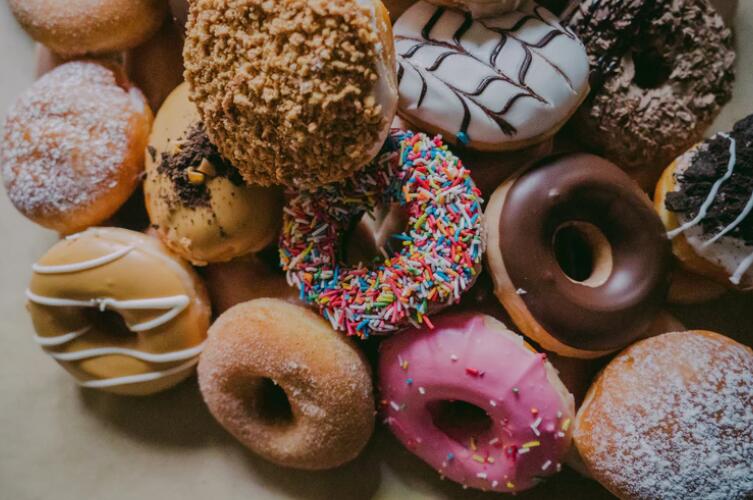8 Tips on How to Limit Added Sugars in Your Diet
Added sugars can be awful for your health. Sugar may give you a jolt of energy, but it ultimately makes you crash. No one loves the feeling of a midday crash after consuming a high-sugar breakfast or a cup of coffee loaded with sugar. Unsurprisingly, sugar is also bad for your diet. Not only can it pack on the pounds like little else, but it can also spike your blood sugar levels. Consistent consumption can even put you at risk for diabetes and other illnesses. The good news is that you can easily learn how to limit your sugar intake. All it takes is a few well-placed substitutions and some changes in behavior.
1. Snack Smart
Instead of snacking on cookies and cakes that are laden with sugar, keep your eye out for low-sugar or sugar-free snacking alternatives. Opt for dark chocolate over milk chocolate when you can. Look for sweet treats that contain healthy ingredients, such as almond butter, coconut, or peanut butter. The choices are out there, offering themselves to you. You simply have to try them.
2. Skip the Soda
Soda is one of the worst things you can drink. A single can of Coke contains nearly 40g of sugar. It’s not slaking your thirst when you drink it. If anything, all of that sugar will make you thirstier, which may lead to another soda, and another, and another. Water is, of course, the best alternative. It’s free of sugar and keeps you hydrated. If you’re not a fan of water, then you could add a few drops of a sugar-free flavor agent, a twist of lemon, or muddled fruit. When you simply can’t quench the urge for a soda, go with a diet or Zero option. Seltzer water might work, too. You get all the fizz and none of the extra sugar.
3. Cut Down on the Sweet Things
Putting sugar in your cereal or coffee, drenching your pancakes in syrup, adding honey to your tea — there are dozens of beverages and foods that require extra sweetness. You may not be able to give up all of them, but you can certainly cut down. Avoid pre-sweetened sugar cereals and other sugary breakfast foods, such as toaster tarts and pastries. When you add sugar to your cereal, wean yourself by using a bit less each time. The same goes for everything else, including honey, molasses, and syrup. You don’t have to go cold turkey but using a little less of these ingredients will help to limit the sugar in your diet.
4. Go with Fruit
Another option is to cut sugar completely from your morning routine. Rather than spooning sugar into your cereal, oatmeal, or porridge, why not add fresh fruit? It’s delicious, nutritious, and allows you to get natural fruit instead. Bear in mind that dried fruits, such as raisins and dried cranberries, can contain more sugar than fresh fruits. However, it’s still less than the amount of sugar you consume when you drop spoonful after spoonful into your bowl.
5. Avoid the Syrup
Sugary maple syrup isn’t healthy in huge amounts, but that’s not what we’re talking about right now. If you ever enjoy a can of fruit cocktail or a container of peaches or pears, take note. Most of those fruits are packaged in syrup that’s high in sugar. The syrup serves to “enhance” the taste of the fruit while keeping it moist and preserved. It’s unnecessary, though. You can just as easily find fruit cups that are canned or packaged in their own natural fruit juice or in water.
6. Try Flavor Additives
You might think that sugar is the only way to add sweetness to your meals, from pancakes to baked goods, but that’s not the case. To pack in more flavor, consider using natural additives and extracts to cut down on sugar. Vanilla extract creates a lovely, light taste. There are also almond and lemon extracts that can add flavor and hints of sweetness to your food.
7. Look for Alternatives
From Stevia and Truvia to coconut sugar and monk fruit sweeteners, there are all sorts of alternatives to traditional sugars. They don’t rank as high on the glycemic index, either. It may take some experimentation to find an alternative sweetener that you like, but that’s okay. If possible, start with individual packets. That way, you don’t have to splurge on an entire container of something you don’t like. Be careful with consumption, as well. Some alternative sweeteners may cause you to eat more because it seems “safe.” Moderation is still key with sweet treats, though.
8. Spice, Not Sugar
Sometimes, adding the right spices erases the need for a lot of sugar. That goes for sweet breakfast dishes, such as oatmeal, pancakes, and waffles, as well as for baked goods. In fact, adding spices to cakes, cookies, puddings, and other recipes can take the finished product to another level. Think about playing around with allspice, cinnamon, ginger, and nutmeg the next time you make something sweet. There are also spice blends with no sugar, including apple pie blends and pumpkin spice mixes.
Cutting the sugar will do wonders for your health and well-being. Where could you reduce it from your diet?

